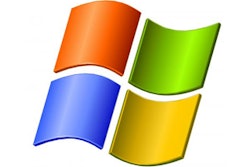Psst, Wanna Buy Some Virtual Real Estate?
A Beginner’s Guide to the Internet’s New World, Slightly Right of the Dot
In 2013, we are witnessing a resetting of the Internet clock, making it possible to purchase a tract of virtual real estate to the right of the dot, as in .chevy, .samsung or .dell. We saw early signs of it this past February, in some of the Superbowl advertising. Remember how Booking.com ended its spot with a saucily intoned, “Booking dot yeah”? This was one of the first widely publicized hints of the new world that’s opening up online. From .com, .org, .gov, .edu, and a handful of other domain name suffixes we’ve become accustomed to, the world to the right of the dot — known as generic Top Level Domains, or gTLDs — is exploding to hundreds, and possibly thousands, of these suffixes.
Back at the beginning of the Internet era, many companies, manufacturers included, gained a dawning realization of the need for their own online presence. Before you could say “Cadillac,” big manufacturers were racing to lock in the .com after their brand name. Many succeeded, but a few didn’t — which is to say that others grabbed their brand name followed by .com before they could, and were then able to resell it to the brand owner, sit on it, or use it whether fraudulently or otherwise, to trade on the good name built by the actual brand owner. So if Coca-Cola hadn’t successfully registered for coke.com, it was out of luck, and left to the tender mercies of whoever had bought it.
Now a world of online opportunity is opening up, and with it, a world of risk. What happens when a manufacturer gets its own (brand name) gTLD? What happens if it doesn’t? What can happen with a plethora of new open suffixes (TLDs) becomes available, suffixes like .car, .credit, .nyc, and so on?
Suddenly it isn’t sufficient that Ford got its .com (which it did), because now it can apply for .ford. Which it has. Ford has also applied for .lincoln, illustrating some of their strategic thinking around sub-brands.
For those companies that have applied for a gTLD, the value in blazing the trail and revolutionizing the way in which they interact online is pretty easy to recognize. Take Johnson & Johnson and their product Glade as one example. The current specific brand URL is www.glade.com; the product URL is http://www.glade.com/en-US/Products/Pages/Default.aspx; and the online store URL is http://www.glade.com/en-US/Pages/BuyOnline.aspx. Now J&J has applied for .glade, and could very easily move all this Internet real estate under their own gTLD, which they own and control – for example, www.glade, www.product.glade, www.buy.glade, or www.shop.glade. Cleaner and simpler, right? It’s like online feng shui.
When it comes to manufacturers making an informed decision about how deeply to invest in these online changes, the $64,000 question becomes: Is www.glade more compelling to customers and Internet users than www.glade.com? If J&J gets .glade right and consumers start to associate .glade with the product, then they can leverage this new virtual real estate in increasingly creative ways.
Clearly the possibilities are almost limitless. The case for buying your .manufacturer (such as .chevy, .buick, etc.) can be summed up in a word: opportunity. What goes to the left of the dot is only limited by your imagination. So Walmart, as a retailer, might see fit to roll out domain names like community.walmart, sustainability.walmart, ethicalsourcing.walmart and financing.walmart (see what I mean about imagination?). If you think about FMCG manufacturers such as Procter & Gamble, Unilever, Reckitt Benckiser or Johnson & Johnson, the same applies. As a first play, this could be a way for manufacturers to take a clutter-reducing approach to their left-of-dot uses.
What’s the Manufacturing Connection?
Even as we enter the Internet’s equivalent of the next millennium, the world of manufacturing continues to have much more to do with the physical world than the virtual. Its mindset centers on the largest output at the highest level of quality, produced with the greatest amount of efficiency, at the lowest possible price. Unlike the world of IT, where it’s possible for a company to sell thousands of additional software licenses, or where web-based organizations like Google or Facebook can gain millions of new users at virtually no additional cost, in manufacturing, scale is achieved by adding capacity — real estate, machinery, people, materials and shifts.
While there’s no argument that the online and virtual worlds play an increasingly important role to manufacturers, be it in marketing, supply chain, real-time dashboards or communication of their brand via their website, there’s still the sense that its role is far less fundamental to them than it is to the Amazons, Twitters and Facebooks of the world. This goes back to the fact that physical factors are key contributors to the success of manufacturing. Whether by being close to waterways, roads and trains, labor force or available raw materials, the physical location of manufacturers is uppermost. When there’s so much at stake on the physical side, why suddenly worry about the location of a virtual dot?
It comes down to this. The rollout of new TLDs is calling for manufacturers to think more about the location of this dot, and by extension, all of their virtual real estate assets. In essence, just when they got used to being .coms, with their name to the left of the dot, manufacturers will have to give as much or more thought to how they position themselves virtually, to the right of the dot, as do the Googles and the Amazons. And these considerations of virtual real estate will loom as large as physical real estate, requiring as much, if not more, creative and defensive thinking.
Optimizing the New Open TLDs
Describing a tiny portion of the opportunity presented to manufacturers in acquiring their own brand’s gTLD (.johndeere and so on) doesn’t change the fact that it’s an expensive and complex procedure to gain one — from the $186,000 application process, to annual fees and possible legal expenses should the domain be contested. So, let’s suppose that a manufacturer decided against buying their .manufacturer or their .brand(s).
Beginning soon, hundreds of new open TLDs will begin to hit the airwaves — circumscribing geographies, industries or pursuits in a more general way. Here the new opportunities lie to the left of the dot. In the open TLDs, such as .online or .deals, manufacturers need to consider the risks associated with their brand name being associated to the left of the dot, and more ominously, someone purchasing a string that encompasses their name, to the left of the dot, for example, your [manufacturer’s name].sucks. The Internet is still, after all, a vehicle for freedom of expression.
And so opportunities abound. How much weaker would Toshiba.finance be than finance.toshiba, their own expensive TLD being to the right of the dot? In the event that the manufacturer eventually gets its own gTLD, the former could even be redirected to the latter. Then there are Toshiba.credit, Toshiba.store, Toshiba.parts, and Toshiba.tokyo — even Toshiba.ninja (yes, someone actually applied for the gTLD .ninja).
Understanding the Risks and Balancing Choices
Considering that this is all quite new territory, it’s important for manufacturers to tread with caution, but not too much caution. There’s a strong case to be made that
manufacturers of multiple brands, in multiple territories with multiple online channels, need to be just as concerned with the new TLDs as any other type of corporation. Companies have a natural exposure to opportunities and risks by virtue of their brand portfolio, geographic locations, go-to-market strategies and so on.
Gaining a thorough understanding of their current portfolio of domain names is an important first step, but it goes much further than that. For example, companies need to think strategically about how their current trademarks and brand names map to the gigantic new searchable gTLD landscape in a meaningful and sensible fashion. Determining the brand owner’s specific business interests, separating what’s most relevant from what’s least relevant, and knowing what it’s protecting against can inform subsequent choices as to whether to invest in their own gTLD or select combination of new open TLDs.
Reducing the plethora of online risks — which include cybersquatting, fraud, piracy and other forms of infringement crime — to their simplest denominator, it’s causing damage to the brand that should be of greatest concern. And with all these new doors opening in cyberspace via hundreds of new TLDs, manufacturing companies need to remain vigilant. Taking a balanced approach to investing in new domain names is necessary.
This time around, there are several new security and dispute mechanisms in place to help resolve issues with this influx of TLDs. For example, registering your brands with the Trademark Clearinghouse will provide you with early warning that someone is applying for a TLD that matches your brand name, during the sunrise period of the new gTLDs. But the sheer number of TLDs means that legitimate holders of identically named brands in different industries or geographies will need to stake their claim, and soon.
Then there are those without any legitimate claim at all to a brand name, pointing the way to countless new loopholes for cybercriminals to slide through. Suddenly there will be countless possible domain name permutations and search terms for any brand. If fraudsters are temporarily able pull a fast one with an illegitimate domain name use, even these transitory registrations can cause damage to the brand.
Once a manufacturer has forged an online strategy and invested in a portfolio of the right domain names, this TLD expansion will necessitate a greater level of vigilance as well as greater allocation to risk management. Along with the enormous brand marketing opportunity posed by hundreds of unique new gTLDs, having a mechanism in place to find brand infringers and shut them down will exponentially increase brand protection.
Luge Pravda, senior VP at NetNames USA, is a globally recognized expert in TLDs (Top Level Domain names) and online brand protection. Since joining the company in 2000, he has been involved in several large TLD launches, including .info and .biz in 2001, .eu in 2005, .asia in 2007 and .xxx in 2011. In the area of domain name management, he has been responsible for some of NetNames’ biggest clients in the logistics and telecom industries. Contact him at [email protected].






















